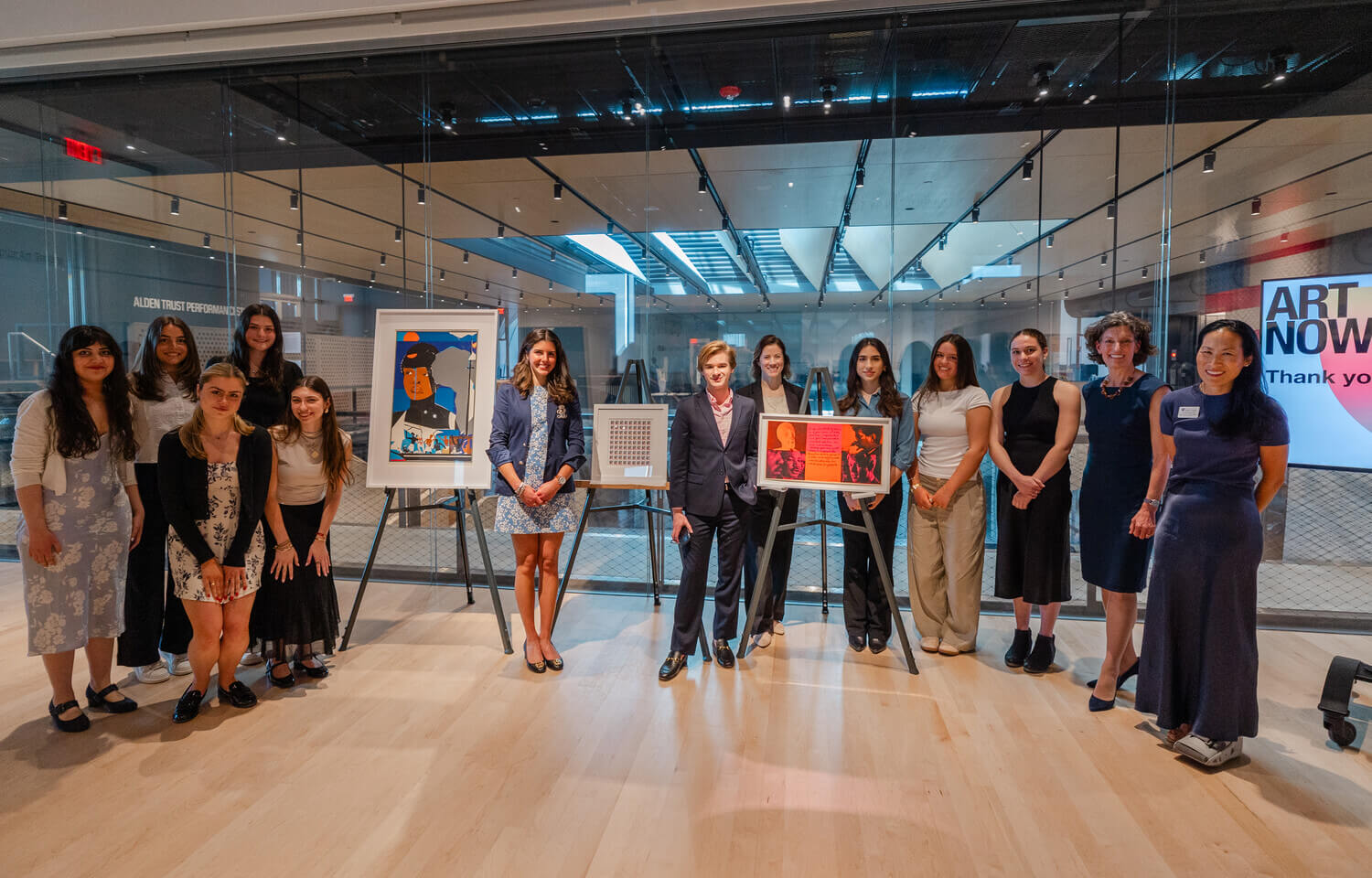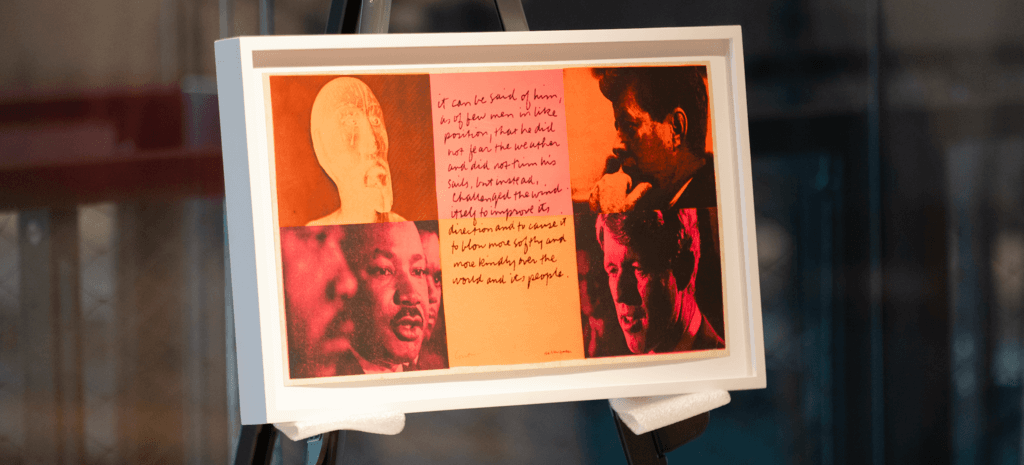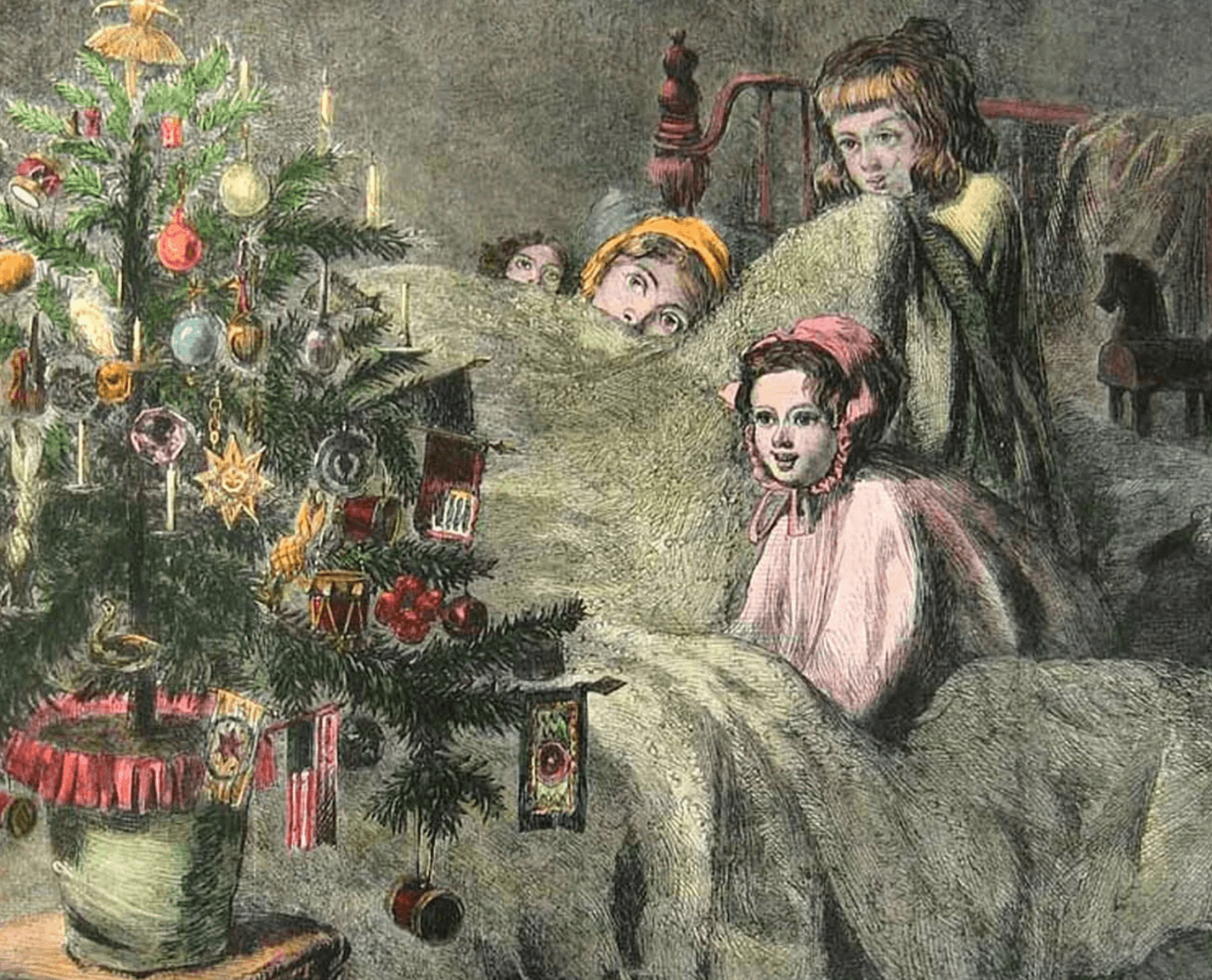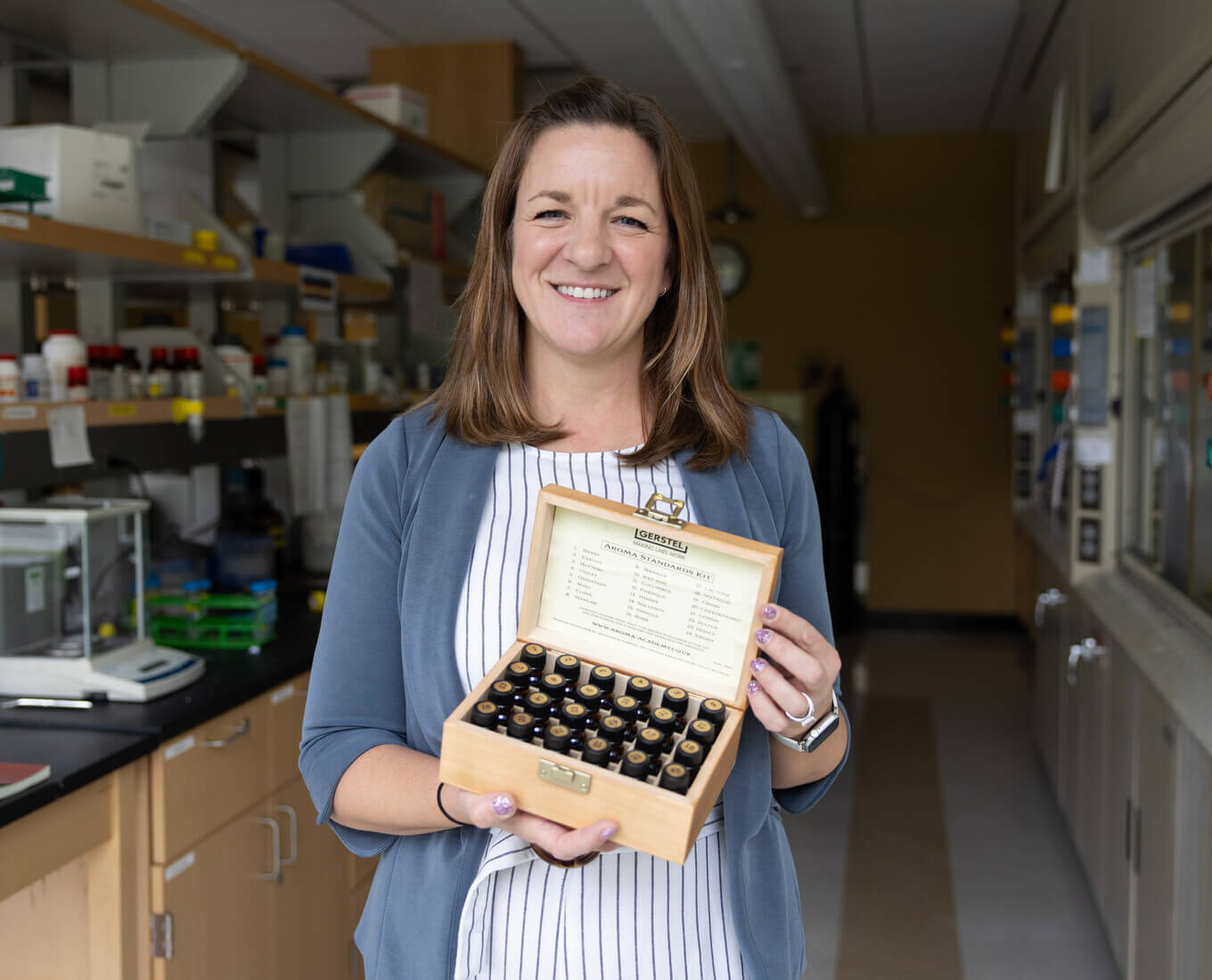Studio art major Emilia Bertram ’26 says one of the unanticipated consequences of pursuing a life in the arts is having to answer for every bizarre thing that happens in the art world.
Why did a banana duct-taped to a wall fetch $6.2 million at a 2024 auction? At Sotheby’s? Why did Cy Twombly’s scribbles on a blackboard fetch $70 million (yes, you read that right) in 2015?
Why, when the U.K.’s richest living artist, Damien Hirst, arranges 6,136 prescription pills like ants marching in a medicine cabinet, do art lovers lose all perspective? And, so what if he hand-painted the pills?
“There's always intrigue — and often outrage — when a seemingly simple work of art sells for millions of dollars at auction,” Bertram said. “As the art major in my family, I'm often asked for an explanation or insight into such news stories, but until now I've never had the words to explain the factors that make up value in the art market.”
She has the words now.
In spring 2025, Bertram and 9 other students in the course Art Now! Contemporary Activism in Art and Museum Collecting, became acquisitions managers for the College’s Iris and B. Gerald Cantor Art Gallery, researching, evaluating and, ultimately, purchasing contemporary art for the gallery’s permanent collection. Melissa Geisler Trafton, visiting lecturer of visual arts and art history, and Lauren Szumita, director of the Cantor, taught the course, which acquaints students with every step of the process museums go through in purchasing art for their collections. Students worked with a budget of $10,000, offered by an alum to purchase three fine art prints: “it can be said of them” (Corita Kent, 1969), “Slave Ship” (Romare Bearden, 1972), “Untitled (Stamps)” (Barbara Kruger, 1990/2013).
“Art Now! seemed like an opportunity to examine how contemporary art can exist as both a creative endeavor and as a commodity,” Bertram says.
Over the course’s 12 weeks, and in addition to classroom instruction, the Art Now! students immersed themselves in the contemporary art world, visiting print fairs and galleries in Boston and New York City. They conducted interviews and negotiations with gallerists, attended a printmaking workshop, read and listened to podcasts, and made presentations on artists whose work they would like to purchase.
And then they purchased it.
An insider’s look at the art world
Art Now! is a new offering for the Department of Visual Arts. Trafton’s reason behind teaching the course was to give students an understanding of the art market; that is, how it’s structured and its economics. The course was also another opportunity to integrate museum studies into the College’s visual art and art history program through the medium of contemporary art. Students also received an education on printmaking and its affordability for collectors.
“The art world scene can be somewhat intimidating,” Trafton said. “We don’t want students to feel that they are outsiders in this world.”



